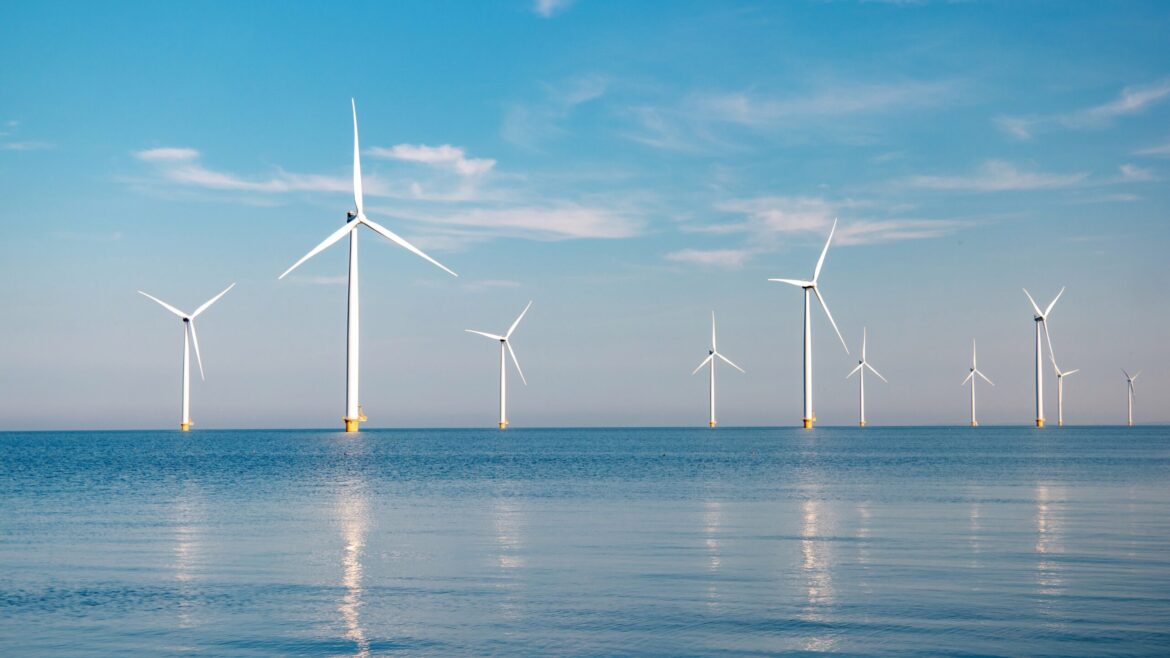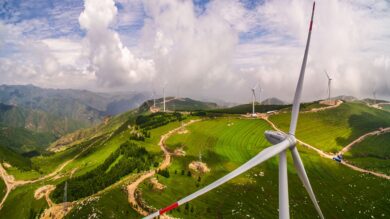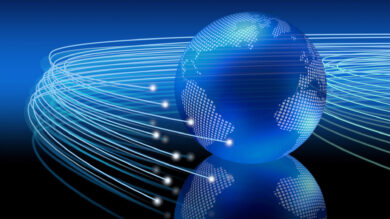How wind power works
Did you know that all wind power starts with the sun!
Wind currents are a type of solar energy that result from changes in air temperature and pressure. Wind power works by converting the kinetic energy of the wind into electrical energy through the use of a wind turbine. A wind turbine is made up of four main parts: the base, tower, generator and blades (or propellers), which catch the wind’s currents.
Kinetic energy from the wind forces the turbine’s propellers to turn, which spins a series of gears connected to the generator. The generator then converts the wind’s energy into electricity. The longer the propellers, the more kinetic energy they can catch and ‘harvest’ from the wind, so even gentle breezes can produce electricity. This is one of the reasons why some wind turbines are so big!
There are several ways to get power from wind energy. Wind turbines can be built on land, on lakes or in the ocean, in remote wilderness far from the power grid, within cities, or across vast plains.
One wind turbine can power an individual home or farm, but several built close together form a wind energy plant, or wind farm. Wind plants can be land-based or offshore, and they can be hybrid plants (meaning, they include other sources of energy, such as solar energy). Wind energy researchers are trying to learn how many wind turbines built in which arrangements can maximise energy production in wind plants.
Today, most grid-connected wind plants are at least 1 megawatt or larger.
Wind energy has three major applications: land-based, distributed, and offshore.
Land-Based Wind Energy Is the Most Common
With multiple wind turbines working together, land-based wind energy plants can provide power to the electric grid to power homes, businesses, and more.
The majority of turbines are installed on land. And land-based wind energy is one of the lowest-cost sources of electricity generation, as highlighted by the U.S. Department of Energy.
Researchers at NREL are categorizing wind resources on land and advancing wind turbines to more efficiently generate electricity at even lower cost.
Distributed Wind Energy Powers Remote and Local Communities
Distributed wind energy is a distributed energy resource, meaning it produces a smaller-scale unit of power. In this case, it comprises one or more wind turbines, which range from a kilowatt to several megawatts in capacity.
These typically land-based turbines operate locally to provide energy for individual buildings or small communities, though they can be connected to a power grid at the distribution level. Some wind turbines can even pop up as mobile, on-demand sources of clean power in disaster or defense scenarios.
 Homeowners, farmers, businesses, and industries make use of clean, distributed wind energy to pump water (to use as drinking water, to irrigate farms, and more), to lower electric bills, and to reduce air pollution.Distributed wind turbines are improving all the time, growing stronger, less costly, more resilient, and more efficient.
Homeowners, farmers, businesses, and industries make use of clean, distributed wind energy to pump water (to use as drinking water, to irrigate farms, and more), to lower electric bills, and to reduce air pollution.Distributed wind turbines are improving all the time, growing stronger, less costly, more resilient, and more efficient.
This 15-kilowatt turbine, used for distributed energy, rotates around a
horizontal axis, the most common kind. – Photo from Bergey Windpower
Offshore Wind Energy Is Newer but Growing
Wind turbines used in offshore wind energy can be even larger than on land, with towers up to 250 metres tall, blades as long as a football field and have a generation capacity of up to 15,000 kilowatts (or 15 MW).
These behemoths depend on strong sea breezes to spin turbines that are either anchored to the seafloor (called fixed-bottom wind turbines) or installed on platforms that float (called floating wind turbines). Offshore wind turbines can provide electricity to power ocean-based research and equipment, such as unmanned robots used for marine exploration; remote or island communities disconnected from the grid; or entire cities back on land.
The offshore wind energy industry is growing. Researchers are identifying massive amounts of potential wind energy off U.S. coastlines, and the Biden administration has set a goal to install 30 gigawatts of wind energy by 2030. That will require us to grow the offshore wind energy workforce as well as the supply chain to build and infrastructure to deploy new offshore wind farms.





